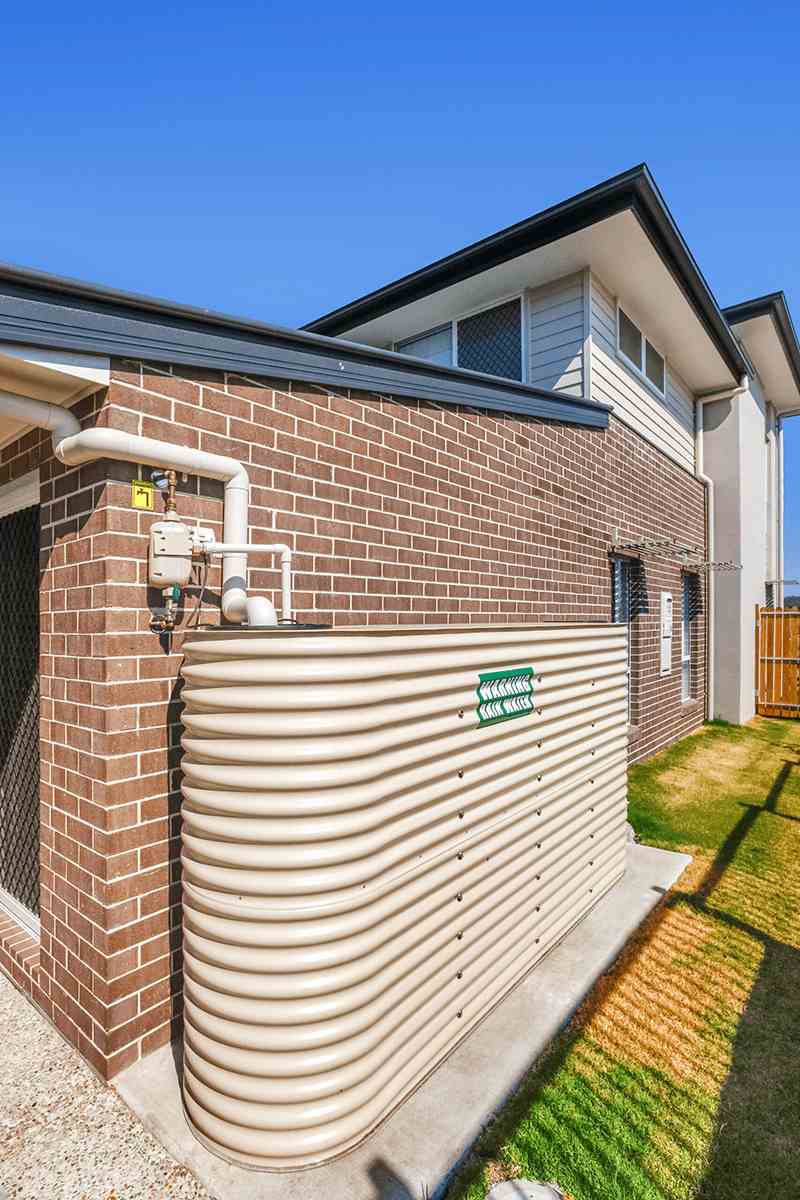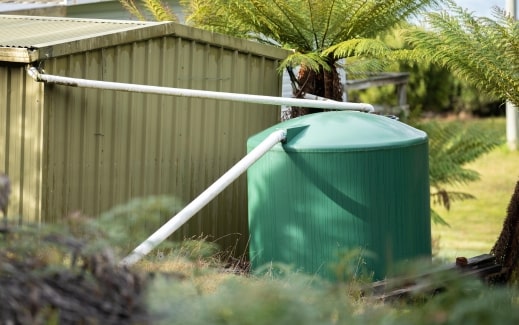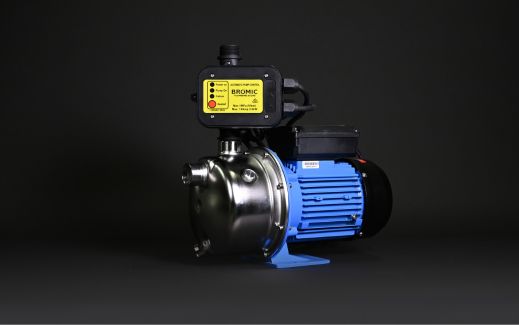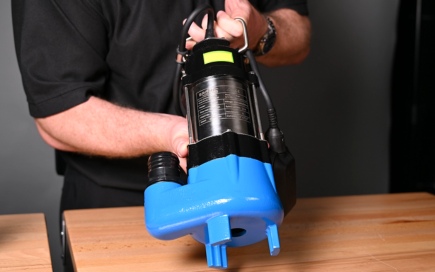
Favourites
Sign in to your account
By adding to Favourites, you can…
- Save products or resource documents you view regularly
- Save time with quick access to frequently viewed items
Please sign in or create an account to add to your Favourites.
Articles
December 6, 2023
Fight the Drought with Rainwater Harvesting
With one of the most variable rainfall climates in the world, there’s no doubt that Australia & New Zealand will continue to face periods of reduced rainfall and severe droughts over the next 100 years. With climate changes such as El Nino, we can face reduced rainfall which can negatively impact agriculture and water supply for businesses and everyday homeowners.
There are many ways to practice conserving water to minimize the effects of drought and water shortages. In this article, we’ll be exploring ways everyday homeowners can save water and make every drop count with rains-to-mains water harvesting systems.
Contents:
- 8 Water-Saving Tips
- Collecting Rainwater with Tanks (and why you should!)
- Can you use tank water through water restrictions?
- Rain-to-Mains Water Pump Systems for Dry Climates
- Why use a pump for your rainwater tank?
- Setting Up a Rains to Mains Water Pump System
- Selecting a Pump for your Rains to Mains System
8 Water-Saving Tips for Home
There are many small things you can do to make a big difference in water conservation, especially in times of drought. Here are a few tips anyone can do to make every drop count.
- Install water-efficient shower head – Water-efficient showerheads can save over 10,000 litres of water each year.
- Install a dual-flush toilet – Dual-flush toilets can save 35,000 litres of water a year for a family of four..
- Buy a water-efficient washing machine – Front-loading washing machines can use up to 50% less water than top-loaders. Always look for a 4-5 star energy rating when choosing your appliance.
- Install a rainwater tank – Collecting rainwater with a rainwater tank is a great way to save on using the mains water supply, especially for the garden and other activities that don’t require high-quality drinking water.
- Install a rains-to-mains water harvesting system – By installing a rainwater tank with a pump and controller, your system can automatically switchover to using the mains water supply when your tank water is low or empty. See our Installing a Rains-to-Mains Water Pump System section further down.
- Re-use greywater – Use a bucket to collect grey-water such as water from the start of your shower or bath from your washing machine’s final rinse cycle or water used to wash your veggies. This water can be used to water your garden. Make sure you’ve been using low-sodium soap, shampoo and detergent, and use the greywater within 24 hours.
- Water your garden wisely – When hot weather is forecast, it’s ideal to water your plants the night before to allow water to penetrate the soil and get absorbed by your plants effectively. Another tip is using a watering can instead of a water hose!
- Fix leaking taps and appliances – Leaking taps can waste as much as 200 litres per day! If you can visibly see a leak, it’s important to get it fixed as soon as possible. Concealed leaks can also occur in pipes underground or in walls. If you can’t see a leak but your bill has increased for no reason, you should call a specialised plumber.

Collecting Rainwater with Water Tanks
Rainwater harvesting provides a valuable solution, particularly in dry climates and for communities facing water scarcity and droughts. By collecting and storing rainwater from rooftops or other surfaces, individuals can create a supplementary water source independent of traditional water supplies. This harvested rainwater can be used for various purposes, such as watering plants, flushing toilets, and even for household needs.
The practice not only helps reduce reliance on strained municipal water systems but also contributes to sustainable water management. During droughts, when conventional water sources may be limited, having a stored reservoir of rainwater can serve as a crucial backup, ensuring a more reliable water supply for essential needs and alleviating some of the impacts associated with water shortages.
Rainwater harvesting provides multiple environmental and economical benefits
- Reduce reliance on strained municipal water systems, especially during droughts
- Reduce ongoing water bills with less use of mains water supply
- Reduce greenhouse gas emissions associated with water treatment
- Reduce the environmental impact of urban water runoff
- Access to rainwater during water restrictions
- Important for emergency supply, especially in times of bushfires.
If you have a pool, tank or dam with more than 3000L of capacity – you can also help local firefighters with a Static Water Supply (SWS) sign on your property entrance.
Can you use tank water through water restrictions?
Water restrictions are just one of the measures authorities take to ensure adequate water supply is maintained. These are typically triggered when dam levels drop to a particular percentage of capacity. Rules may include not using sprinklers, only hand-watering gardens and lawns on particular days and during certain hours, not filling or topping up swimming pools, not hosing hard surfaces, and only washing vehicles at a frequency dictated by authorities. Failure to comply with these rules can result in fines.
According to Sydney Water, water sourced from greywater, rainwater (that does not contain any drinking water) and recycled water are excluded from Water Wise Guidelines. This means that rainwater collected from a tank that doesn’t contain any drinking water is exempt from Water Wise Guidelines.
For those who have installed rainwater tanks, collecting water from your roof means being able to access this precious resource for watering the garden, flushing toilets and even washing the car. Whilst it’s still important to use all water wisely, this means that even during times of drought and water restrictions, you can access rainwater to use for those purposes. You will also avoid any fines that may be associated with unauthorised use of mains water.
For direct rainwater tank access, a tap can be installed at the bottom of the rainwater tank. This is the most affordable option and can be used to fill up buckets or attach to a hose for watering the garden. However, if you intend to use rainwater where pressure is needed, then the tank will require a pump.
Rain-to-Mains Systems for Dry Climates
Collecting rainwater is a great way to make the most of nature’s precious resource. Beyond watering your garden – rainwater can also be connected to your water supply system to provide water directly to your home appliances such as taps and washing machines. This can be done by installing a Waterboy Hydro Switch Rain–to–Mains Changeover Valve with a Water Pump System. This economic and efficient automatic changeover valve allows you to use stored rainwater for household applications such as toilets, laundry, and gardens and allows you to use your rainwater tank supply first before automatically switching to using mains water supply when your tank water is low or empty.
Below: Example set-up of a rains-to-mains system with a Bromic Waterboy Pump and Wizard Controller.

Why use a pump for your rainwater tank?
A Rains to Mains Water Pump System provides many benefits for homes and agricultural use, especially during times of drought:
- Increase water pressure – A gravity-fed water tank system may not be able to provide enough pressure to reach appliances and taps. By installing a pump, water pressure can be increased to allow for adequate flow to taps and appliances.
- Switch between rains to mains – With a pump controller, a rains to mains system can automatically switch to using the main water supply when the rainwater tank supply is low or empty.
- Reduce usage of mains supply – With rainwater supply to appliances and taps, a rains-to mains-water pump system will further reduce reliance on mains supply water
- Backup Supply – In rare cases where mains water supply is inaccessible or shut off, your rainwater tank can provide a backup solution for pressurised rainwater
Setting Up a Rains to Mains Water Pump System
To set up a rains-to-mains water pump system, you’ll need a:
- Collection system: including leaf-shedding rain-head and first flush diverter
- Supply system: Including a water pump, controller and filter.
- Appropriate piping
Selecting a Pump for Rainwater Harvesting
Selecting the pump for your needs is important. There are a few important things to consider:
- The type of pump
- Required flow rate
- Required minimum delivery pressure
- Friction losses due to pipe, filters and controllers
- The pressure needed to lift the water to the height of the most critical water fixture
If you’re looking to supply water for your home or business, Bromic Waterboy™ offers pump system solutions for rainwater harvesting including submersible pumps and external jet pump options to fulfil the needs of rainwater harvesting systems, big or small. Available in 40L, 60L and 80L models, they offer a solution individual households as well as rural farms and small business premises.
If you already have a pump in place that doesn’t have an inbuilt controller, Bromic also offers the Waterboy Hydro Switch Rains–to–Mains Changeover Valve which can be retrofitted.



